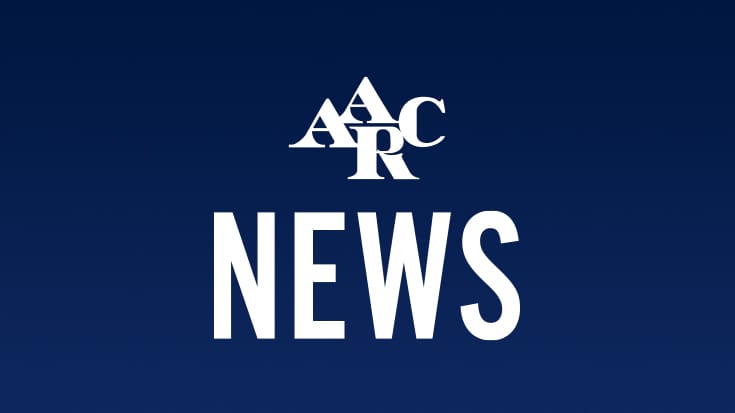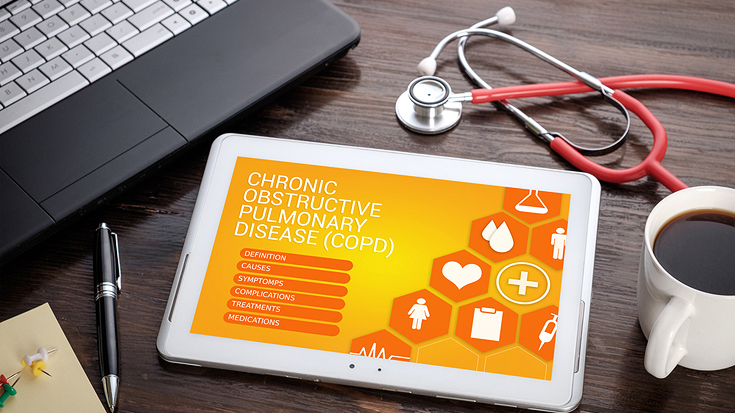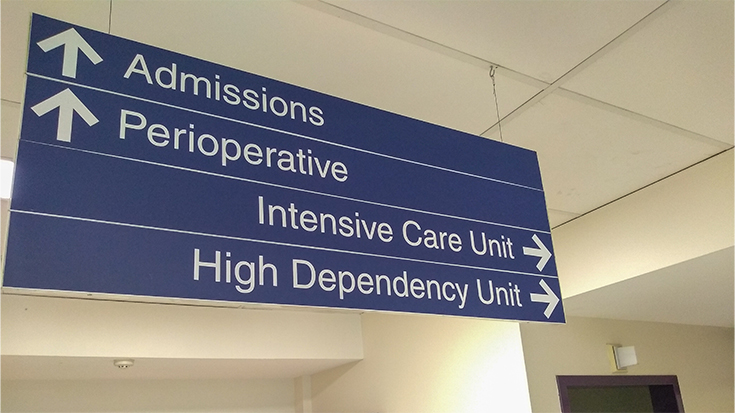
Benjamin Franklin commented wisely about growth: “Without continual growth and progress, such words as improvement, achievement, and success have no meaning.”1
How does that apply to the Pulmonary Disease Navigator (PDN) role?
The PDN role was developed less than a decade ago and has now blossomed and is integrated into many progressive programs across the country. It began as a response to the Centers for Medicare & Medicaid Services (CMS) Hospital Readmissions Reduction Program, which penalizes hospitals that exceed the baseline readmission rate of 19%.2 The goal of the PDN role was to develop and facilitate innovative interventions that would aid in reducing readmissions, and it appears to be working.
We learned that the connections we make with the COPD population created the most significant difference in the readmission rate. Sadly, in the past, when most patients are diagnosed with COPD, they get handed an inhaler and told to “puff on this when you get short of breath.” The lack of disease and inhaler medication education stems from the limited amount of time that physicians are given to spend with each patient. Although handouts provide information to patients, it does not ensure that they understand their disease process, how to administer their prescribed inhaled medications, use their durable medical equipment, or recognize and manage an exacerbation of their disease. Programs that utilize a PDN are able to provide this vital missing link in a COPD patient’s disease progression.
Protocol Expansion
Are COPD patients the only population that a PDN can assist? No. At Intermountain Healthcare, we rebranded the COPD Readmission Reduction Protocol into the High-Risk Pulmonary Disease Protocol. This rebranding created broader opportunities to involve other respiratory diseases. Recently, two new protocols, Asthma and Infectious Disease, opened the doors for the PDNs involvement.
PDNs follow pathways for asthma, similar to the COPD protocol. This disease population encompasses a broader age group but still requires disease-specific education, medication education, and monitoring of physician-ordered exacerbation management. Although there is no CMS penalty associated with asthma, exacerbations have become a financial burden to patients and employers in lost wages and work productivity in the U.S.3
The COVID-19 pandemic demonstrated that an infectious disease population could benefit from the monitoring, care, and assistance of the PDNs. They can navigate the pathways of PFTs, pulmonary rehab, and oxygen therapy with the long-haulers of COVID-19. In addition, this protocol rebranding allows for the future expansion of PDN duties backed by evidence-based medicine. As Mark Twain advised: “Continuous improvement is better than delayed perfection.”4
Future projects
A 53% increase in the economic burden of COPD alone was predicted for the last decade, and projected expenditures skyrocketed to $49 billion recently.5,6 Asthma is also projecting a $300 billion expenditure in medical utilization that includes medications, office visits, emergency room visits, and hospitalizations over the next two decades in the U.S.3 It is time for the respiratory profession to discover new pathways in reducing this economic burden.
Technology is advancing quickly, and the pulmonary patient population has become increasingly savvy to new devices. Bluetooth-capable spirometers, smartwatches that detect SpO2, heart rate, EKG, and even sleep patterns are but a few of the technological advances available. Most of these devices are capable of sending data to a clinician so they can monitor the chronic disease and intervene when indicated.
Intermountain Healthcare recently trialed a successful real-time dashboard for glucose and COVID-19 remote monitoring. This trial assisted patients and their clinicians in managing their disease process. This concept can translate into a real-time dashboard for COPD and asthma that monitors early signs of an exacerbation. Monitoring for an exacerbation, PDNs can help patients start their physician-ordered action plans sooner and reduce rehospitalization risk.
PDN to RT Case Manager
The primary duty of a PDN is patient education and coaching, but that is the easy part of the position. Other more involved responsibilities include investigating medication affordability programs, DME concerns, non-invasive ventilation for home use setup and management, and navigating social barriers, all of which consume much more of the PDN’s time than disease-specific education.
So, are we then functioning as Case Managers instead of PDNs? Yes, I believe so.
According to the Commission for Case Manager Certification (CCMC) and the Case Management Society of America (CMSA):
Case management is a collaborative process that assesses, plans, implements, coordinates, monitors, and evaluates the options and services required to meet the client’s health and human service needs. It is characterized by advocacy, communication, and resource management and promotes quality and cost-effective interventions and outcomes.7
PDNs can successfully check off every box required by these case management definitions. The eligibility requirements to sit for the Case Manager Certification (CCM) exam state that you should hold a license, a bachelor’s or master’s degree in a health or human services field from an accredited institution, or certification in a field like rehabilitation counseling or disability management, to name a few. In addition, employment criteria for the exam vary with time requirements based on CCM supervision.7
This limited field should not just include nurses and social workers. Who knows a respiratory population better than a respiratory therapist? Respiratory therapists are a valuable resource to primary physicians or pulmonology clinics and hospital discharge planners. This burgeoning novel opportunity of case management will include more PDNs in the future and keep us performing at the top of our license.
PDNs in Physician Clinics
A PDN is also add value in a primary care or pulmonology office. They can perform pulmonary function testing, disease-specific education, investigate medication assistance programs, teach correct inhaler techniques, advanced care planning, and care management of high-acuity pulmonary patients. A PDN can also perform a focused and comprehensive exam for exacerbation management. They can spend time with the patient that the physician is not afforded. Promoting this position requires a business model that incorporates the PDN as a vital member of the patient care team.
Why not?
Respiratory therapists have evolved from O2 Jockeys and Neb Slingers to Advanced Practice Respiratory Therapists and Pulmonary Disease Navigators. The world is constantly changing, and as respiratory therapists, we should seek new avenues for growth and continuous improvement. As Irish Playwright George Bernard Shaw once stated: “Don’t wait for the right opportunity: create it.”9
References
- Benjamin Franklin Quotes. (n.d.). Retrieved July 18, 2021, from https://goodreads.com/quotes/103000-without-continual-growth-and-progress-such-words-as-improvement-achievement
- Hospital Readmissions Reduction Program (HRRP). (2021). Retrieved July 18, 2021, from https://cms.gov/Medicare/Medicare-Fee-for-Service-Payment/AcuteInpatientPPS/Readmissions-Reduction-Program
- Yaghoubi, M., Adibi, A., Safari, A., FitzGerald, J. M., & Sadatsafavi, M. (2019). The Projected Economic and Health Burden of Uncontrolled Asthma in the United States. American Journal of Respiratory and Critical Care Medicine, 200(9), 1102–1112. https://doi.org/10.1164/rccm.201901-0016OC
- Mark Twain Quotes. (n.d.). Retrieved July 18, 2021, from https://goodreads.com/quotes/519738-continuous-improvement-is-better-than-delayed-perfection
- Menzin, J., Boulanger, L., Marton, J., Guadagno, L., Dastani, H., Dirani, R., Phillips, A., & Shah, H. (2008). The economic burden of chronic obstructive pulmonary disease (COPD) in a U.S. Medicare population. Respiratory Medicine, 102(9), 1248–1256. https://doi.org/10.1016/j.rmed.2008.04.009
- COPD Costs. (2019, July 5). Retrieved July 18, 2021, from https://cdc.gov/copd/infographics/copd-costs.html
- Definition and Philosophy of Case Management. (n.d.). Retrieved July 18, 2021, from https://ccmcertification.org/about-ccmc/about-case-management/definition-and-philosophy-case-management
- What Is A Case Manager | Case Management Society of America. (n.d.). Retrieved July 18, 2021, from https://cmsa.org/who-we-are/what-is-a-case-manager/
- George Bernard Shaw Quotes. (n.d.). Retrieved July 17, 2021, from https://goodreads.com/quotes/9536617-don-t-wait-for-the-right-opportunity-create-it
Email newsroom@aarc.org with questions or comments, we’d love to hear from you.















